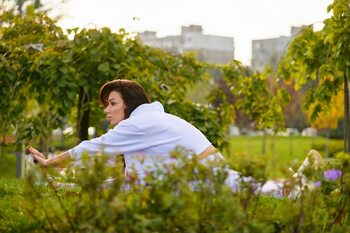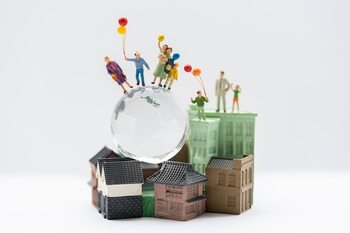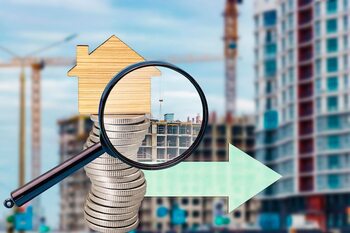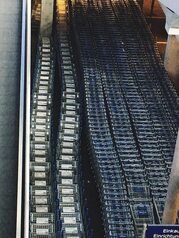The influence of biodiversity on the value of your property

Biodiversity not only beautifies the environment but also directly impacts the value of your property. In a world where location and appreciation are key to a successful investment, understanding how these factors relate is essential. This article will examine how rural and urban areas are influenced by their biodiversity, helping you make informed decisions about your real estate in Costa Rica.
1. Definition of biodiversity and its importance in properties
Biodiversity refers to the variety of life in a given ecosystem, including the diversity of species, genes, and ecosystems. This biological wealth includes not only plants and animals but also microorganisms that play a vital role in the functioning of ecosystems. In both rural and urban properties, biodiversity can manifest through green areas, native gardens, and natural habitats that promote a higher quality of life. The presence of this diversity is essential for maintaining ecological balance, which in turn impacts the health of the built environment.
The importance of biodiversity in properties lies in its ability to enhance the aesthetic and functional appeal of the space. An environment rich in flora and fauna not only creates a more pleasant atmosphere for residents but can also positively influence real estate value. Properties located near parks or nature reserves tend to have better appreciation due to the growing desire among buyers and investors who value living in spaces that offer a connection to nature. Thus, promoting biodiversity becomes a key strategy for both preserving the environment and boosting the economic value of real estate investments.
2. How biodiversity affects the added value in rural areas
Biodiversity in rural areas plays a crucial role in the added value of properties. When a region has a rich variety of flora and fauna, it not only creates an attractive environment but also generates favorable conditions for economic activities such as sustainable agriculture, ecotourism, and environmental conservation. These activities can increase the interest of potential buyers, who seek to enjoy the natural beauty and economic benefits that a biodiverse environment offers. Furthermore, properties near healthy ecosystems tend to have higher demand, which in turn raises their market value.
Biodiversity also contributes to the stability of the local environment by promoting essential ecosystem services such as pollination, pest control, and water quality. These factors are fundamental for maintaining agricultural productivity and improving the quality of life for residents. As more people become aware of environmental issues and seek to live in places that offer a balance between nature and development, rural areas with high biodiversity tend to experience an increase in their real estate value. In this sense, investing in properties located in biodiversity-rich regions can be not only an ecologically responsible decision but also a smart financial strategy.
3. The relationship between biodiversity and urban quality of life
The relationship between biodiversity and urban quality of life is a crucial aspect that influences the perception and value of properties. In urban environments, the presence of green spaces, parks, and natural areas not only provides a visual respite but also contributes to the mental and physical health of its inhabitants. Studies have shown that residents living near areas with high biodiversity tend to report higher levels of personal satisfaction and well-being, which can translate into greater demand for housing in these areas. This increase in quality of life is directly reflected in the real estate market, raising property prices near these spaces.
Additionally, urban biodiversity plays a fundamental role in environmental sustainability. The integration of flora and fauna in cities helps regulate the local climate, improves air quality, and reduces the characteristic "heat island" effect of densely populated areas. Cities that promote rich biodiversity not only provide a healthier environment for their residents but are also seen as attractive destinations for families and individuals looking to settle there. As a result, this reputation can significantly increase the value of properties located in such environments, turning biodiversity into a valuable asset for any real estate investment.
4. Examples of properties with high biodiversity and their valuation
Biodiversity in properties can manifest in various forms, from vibrant ecosystems to the presence of native species that enrich the environment. For example, a property located in a mountainous region with native forests and clean rivers not only provides a vital habitat for numerous species but also becomes an attractive refuge for environmentally conscious buyers. These types of properties not only have intrinsic value due to their natural beauty but also enjoy growing demand among those interested in sustainability and conservation. The appreciation of these properties is driven by their ability to offer unique outdoor experiences and contribute to the health of the planet.
In urban areas, green spaces like community parks or vertical gardens can significantly increase the value of surrounding properties. The incorporation of natural elements in urban design not only improves air quality and reduces the "heat island" effect, but also creates more pleasant and healthier environments for residents. Properties near these biodiverse spaces are often perceived as more desirable, which raises their price in the real estate market. Therefore, recognizing how biological diversity affects both rural and urban environments is essential to maximize the return on investment in real estate.
5. Environmental benefits that increase the value of your property
Biodiversity not only enriches the landscape but also provides significant environmental benefits that can increase the value of your property. A diverse environment offers crucial ecosystem services, such as crop pollination and climate regulation. These natural functions are essential for maintaining a healthy ecosystem, which in turn can make a property more attractive to buyers and potential tenants. In places where nature is present and protected, people tend to value those spaces more, resulting in an increase in real estate value.
Additionally, properties located in areas with high biodiversity often experience lower environmental risk. Dense vegetation acts as a buffer against extreme weather events, such as flooding or landslides, thereby protecting both infrastructure and its inhabitants. When a property is surrounded by trees and native vegetation, the costs associated with maintenance and repair can decrease significantly. Buyers recognize these advantages when considering long-term investments, making it even more important to preserve local biodiversity to ensure not only the well-being of the environment but also the future value of your real estate investment.
6. Strategies to enhance biodiversity in urban areas
To enhance biodiversity in urban areas, it is essential to implement strategies that integrate green spaces and natural habitats within urban planning. An effective option is the creation of community parks and vertical gardens, which not only beautify the environment but also promote local flora and fauna. These spaces serve as refuges for birds, pollinating insects, and other species, contributing to a healthier ecosystem. Furthermore, encouraging the use of native plants in landscaping can reduce water consumption and pesticide use, positively impacting the area's sustainability.
Another key strategy is the implementation of green roofs or gardened terraces on urban buildings. These structures not only help improve the thermal and acoustic insulation of properties but also act as ecological corridors that facilitate the movement of urban species. Additionally, promoting environmental education among residents about sustainable practices can encourage their active participation in community projects aimed at conserving and increasing local biodiversity. By doing so, not only is the quality of the urban environment improved, but the appeal and perceived value of properties near these ecological efforts are also increased.
7. Comparison: Rural vs Urban Investment in Biodiverse Environments
Investment in rural and urban properties presents distinct characteristics, especially when biodiversity is considered a determining factor. In rural settings, access to natural landscapes, diverse flora and fauna can significantly enhance a property's appeal. This type of environment not only offers tranquility and quality of life but can also be a magnet for tourists and nature lovers, potentially increasing the land's value. Additionally, properties in rural areas are often associated with sustainable practices and organic farming, elements that more and more buyers value in their search for a home.
In contrast, urban properties can also benefit from biodiversity, albeit in a different way. Cities that incorporate green spaces like parks or community gardens not only improve air quality and social well-being but also increase real estate value by attracting families and professionals seeking a healthy environment. The trend toward bioconstruction and sustainable urban development is gaining momentum, which further reinforces this link between biodiversity and real estate valuation. Therefore, both rural and urban investments can offer unique opportunities depending on the specific approach to biodiversity in each context.
8. Impact of ecotourism on rural real estate value
Ecotourism has emerged as a transformative force in rural communities, raising not only awareness about biodiversity conservation but also the real estate value of these areas. As more people seek to escape the urban hustle and connect with nature, properties in biodiversity-rich environments become attractive options for those looking to invest. The unique features of these places, such as natural trails, biological reserves, and local wildlife, enhance their appeal, which can result in a significant increase in property prices. This phenomenon not only benefits current owners but also promotes sustainable development that respects and preserves the natural environment.
Additionally, ecotourism encourages investments in local infrastructure and community services that can further enhance real estate value. The arrival of visitors creates opportunities for local businesses, from accommodations to tour guides, resulting in a virtuous circle where the local economy is strengthened. As these communities thrive due to responsible tourism, investors see their potential as a unique opportunity to acquire properties with a high return on investment. In this context, it is essential to recognize how biodiversity not only contributes to the beauty of the rural landscape but also acts as an economic engine capable of radically transforming the real estate landscape.
9. Sustainable future: The relevance of biodiversity in real estate investments
Sustainable future is intrinsically linked to biodiversity, and its relevance in real estate investments is becoming increasingly evident. As environmental awareness grows, buyers and investors are seeking properties that not only offer comfort and lifestyle but also promote sustainable and environmentally friendly practices. The presence of natural spaces, such as parks, reserves, and green areas, not only enhances the quality of life for residents but also increases the appeal of a property in the market. Investing in areas rich in biodiversity can translate into significant added value in the long term.
On the other hand, integrating biodiversity into real estate decisions also involves considering how these areas can adapt to the challenges of climate change. Properties located in environments with rich biological diversity tend to be more resilient to extreme weather events, which can be attractive to environmentally conscious buyers. Additionally, by promoting sustainable urban development that respects and enhances local biodiversity, healthier and more cohesive communities are created. Thus, when evaluating real estate investments in Costa Rica or any other region rich in natural resources, it is essential to keep in mind how biodiversity not only beautifies the landscape but also acts as a valuable asset for the future economic and social well-being of the community.



